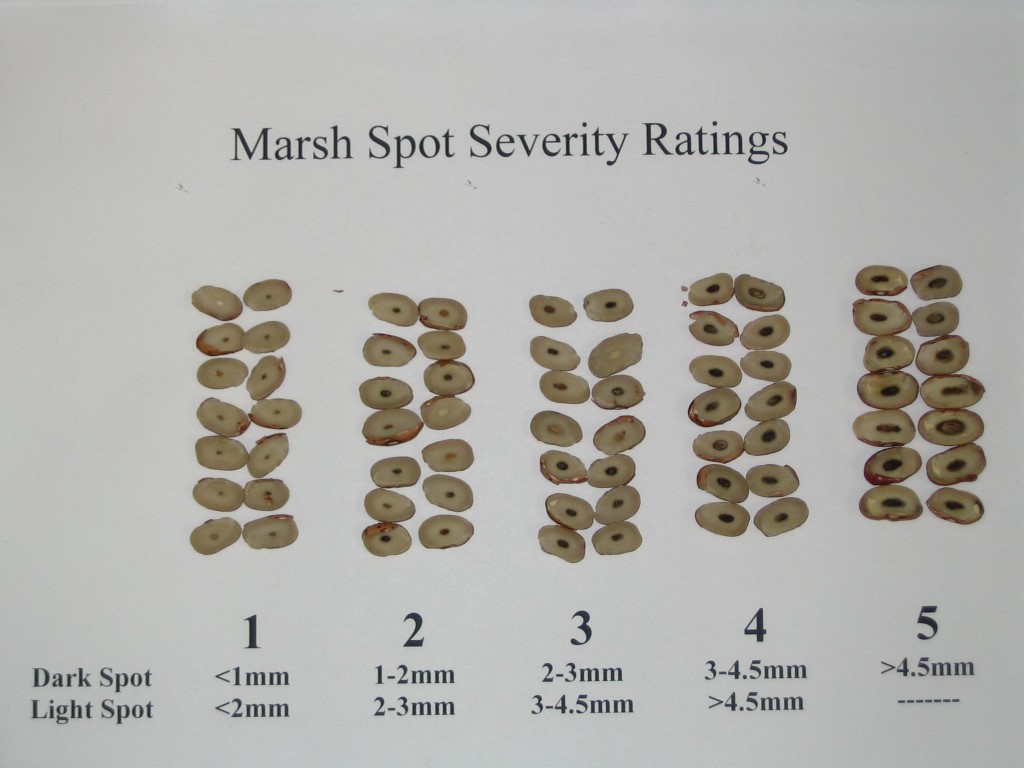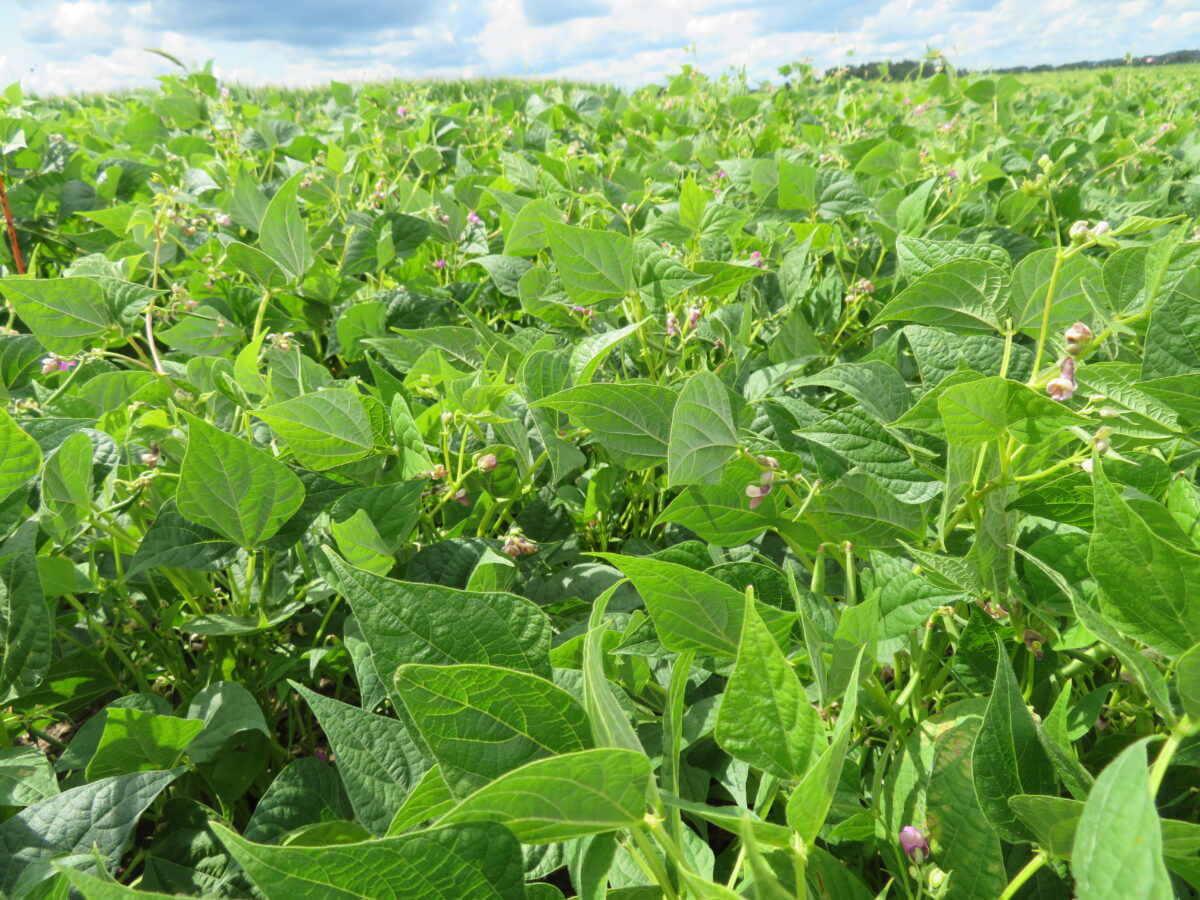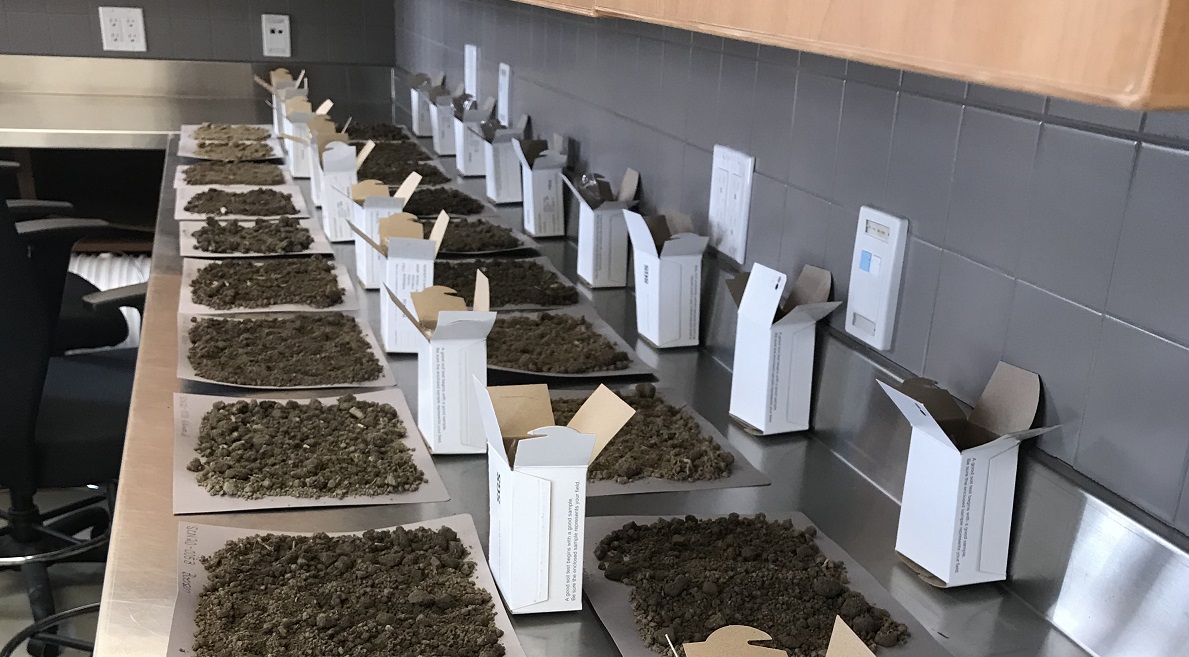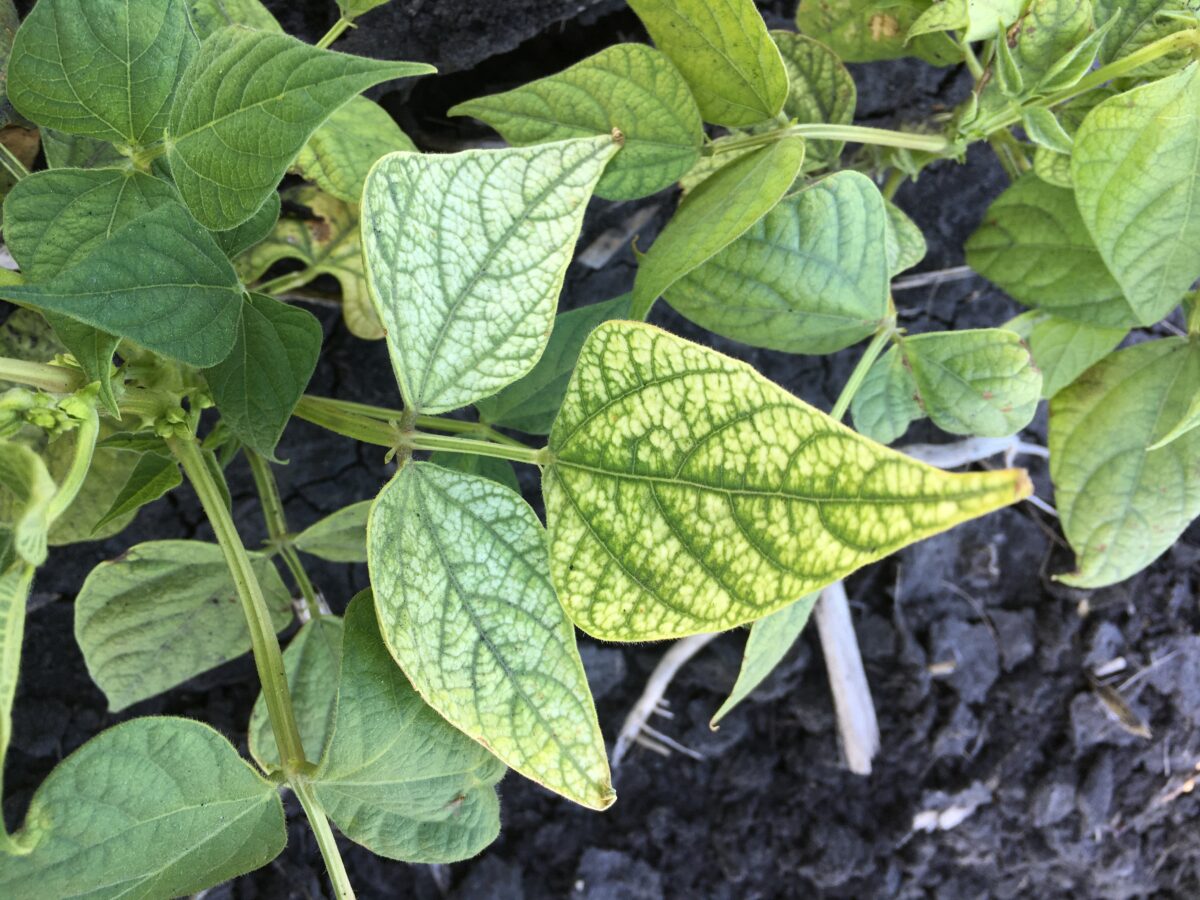A reduction in air pollution has dramatically reduced sulphur deposited into Ontario soils over the last 40 years. Sulphur is highly related to nitrogen in crop plants – sulphur is a key component of leaf chlorophyll and nitrogen fixation nodules. In addition, sulphur is a part of methionine and cysteine, two essential amino acids used…Continue readingSulphur Fertilizer in Dry Bean 2019-2023
Category: Fertility
Marsh Spot
This article was written by Mylene Corzo Lopez, University of Guelph Summary Marsh spot is due to imbalanced nutrient supply to crops, mainly associated with manganese (Mn) deficiencies in the pea and bean plants and is not caused by pathogens such as virus or bacteria. It is most often found in cranberry bean seed. Marsh…Continue readingMarsh Spot
AgTiv is a biological product (Premier Tech Agriculture, Quebec, Canada) that contains mycorrhizae (Glomus intraradices) spores. The product Myconate (Plant Health Care, Raleigh NC) contains the isoflavone formononetin. Both products have a powder formulation applied as a seed treatment, and a liquid formulation applied with a liquid fertilizer at planting. Product claims include increased plant…Continue readingMycorrhizae Products for Beans 2016-2017
Although dry edible beans are legumes, they do not obtain their full nitrogen requirement through nitrogen fixation. Studies have not shown a yield benefit to inoculation with rhizobia. Ontario nitrogen research has demonstrated yield increases in some years but has not shown an economic response to pre-plant incorporated or banded nitrogen. Nitrogen applied pre-flower does…Continue readingNitrogen
Phosphate and Potash
Phosphate and potash recommendations for dry edible beans are presented below in the tables below. Where soil fertility levels are adequate, dry edible beans show minimal response to starter phosphorous. Where potassium fertility is low, deficiency symptoms appear in white beans as yellowing of the lower leaves and necrosis on leaf margins. Dry edible bean…Continue readingPhosphate and Potash
Nutrient Testing of Tissue and Soil
The OMAFRA-accredited soil-testing program provides assurance of appropriate analyses to support guidelines for nitrogen, phosphate, potash, magnesium, zinc and manganese fertilizer, along with parameters for the amount and type of lime to apply. The analytical methods used were chosen to provide accurate results on the range of soils found in Ontario. There is no formal…Continue readingNutrient Testing of Tissue and Soil
Boron
Beans are very sensitive to boron and should not be grown in a field where boron was applied to rutabagas, sugar beets or forages in the previous year. Boron is needed only in very small quantities, and since an overdose is toxic, take extreme care in its use. Boron deficiency has not been diagnosed in…Continue readingBoron
Zinc
Low zinc conditions may occur on low organic matter, compacted, sandy, very high pH and/or eroded soils. Deficiency symptoms may also appear when early growing season conditions are cool and wet. Zinc is not very mobile in plants so deficiency generally appears on new growth. Leaves will appear pale green between veins with yellowing of…Continue readingZinc
Manganese deficiency in dry edible beans has been diagnosed occasionally in Ontario. This problem is more likely to occur on muck soils or very sandy soils. Plants with manganese deficiency have pale green-to-white upper leaves. The veins of affected leaves will remain green. The pattern can appear similar to iron deficiency, but manganese deficiency occurs…Continue readingManganese
There were no differences in yield, even when the fulvic acid fertilizer was tested at 8x of the label rate. There were no differences in yield between cultivars, market classes, sites or years.Continue readingFulvic and Humic Acid Fertilizers in Dry Bean, 2010-2011




